Transitioning from high school to college can be a big challenge for students, especially when they start that new chapter in their life independently, without friends or family. When college kids get involved in classes and extracurricular activities, their stress levels often skyrocket. However, students with disabilities usually face even more challenges.
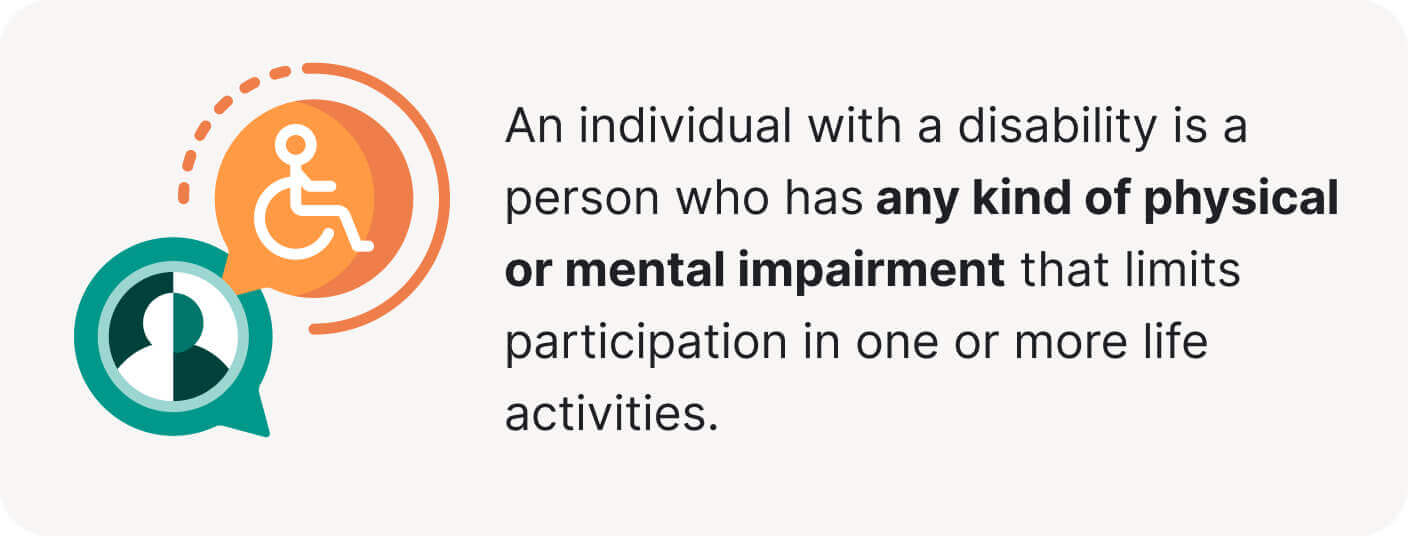
According to recent statistics, 18% of undergraduate and 12% of graduate students have temporary, relapsing, or long-term disabilities. Students might have noticeable disabilities, but many disorders are “hidden.” Luckily, modern colleges have many resources that allow people with disabilities to attend classes and thrive in their academic life. This guide will focus on the advice that can help students with disabilities successfully navigate their higher education.
📍 People with Disabilities – Definition
According to the World Health Organization, a disability is an interaction between individuals with a health condition and the surrounding environmental factors, such as other people’s attitudes, inaccessible transportation, infrastructure, or limited social support.
The World Health Organization highlights that disabilities are highly diverse. They can be:
- Linked to conditions that are present at birth.
- Associated with developmental disorders that become evident during childhood.
- Caused by a long-standing condition, for example, diabetes.
- Related to an injury.
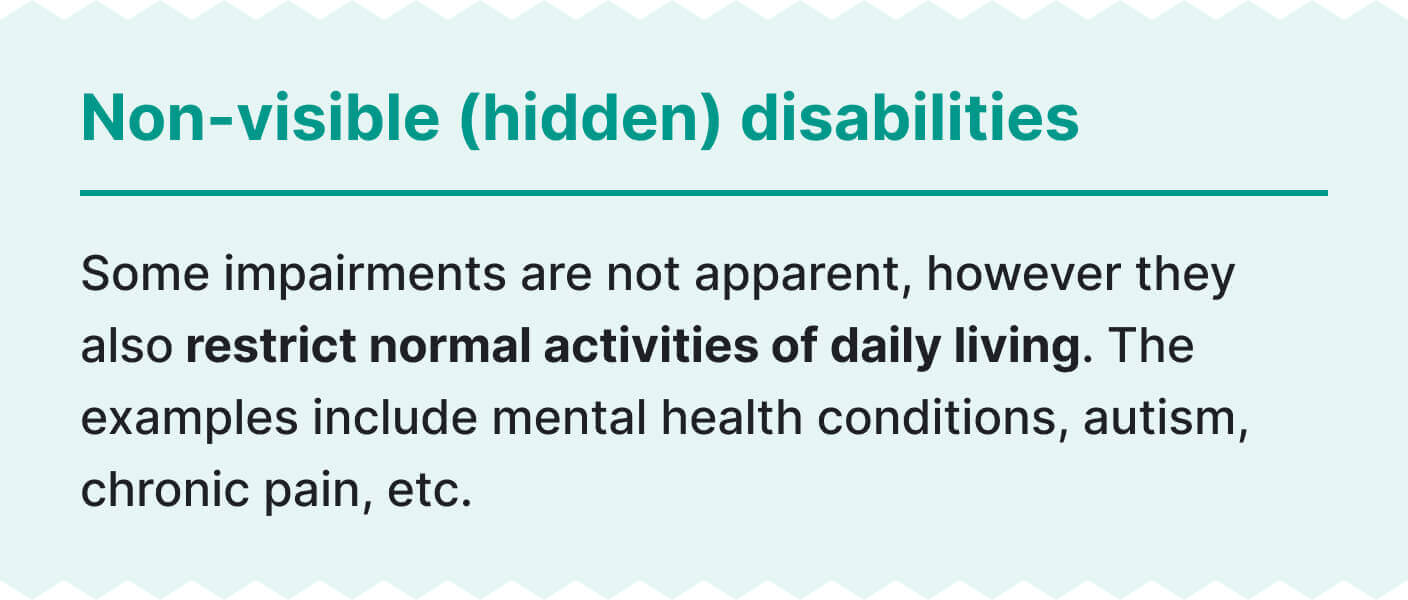
Not all conditions result in poor health and extensive healthcare needs. Nonetheless, people with non-visible disabilities remain at risk of stigmatization and discrimination when accessing public places like educational institutions.
The Center for Disease Control and Prevention defines a disability as any condition (or several) of the body or mind that complicates it for a person to participate in certain activities or interact with the world around them. Disabilities can affect a person’s
- Mobility.
- Vision.
- Hearing.
- Mental health.
- Communication.
- Social relationships.
- Cognitive skills (thinking, remembering, learning, and others).
The Individuals with Disabilities Education Act, created in 1975, characterizes disabilities as conditions that adversely affect academic performance and cause students to require special education and related services.
Types of Disabilities & Classification
Every student with a disability has a unique experience. Hence, various disability classifications exist, focusing on a particular aspect of living with a specific condition. The WHO states that disabilities can appear in three different dimensions:
- Body level is a condition in a person’s body, function, or mental functioning.
- Individual activity level implies difficulties with executing some tasks.
- The societal level refers to challenges with involvement in social activities.
This classification aims to illustrate that a condition that influences a person’s body or functioning may also create individual-level barriers in employment, education, or relationships. Moreover, activity limitations and participation restrictions often result in difficulties in performing tasks and engaging in social roles.
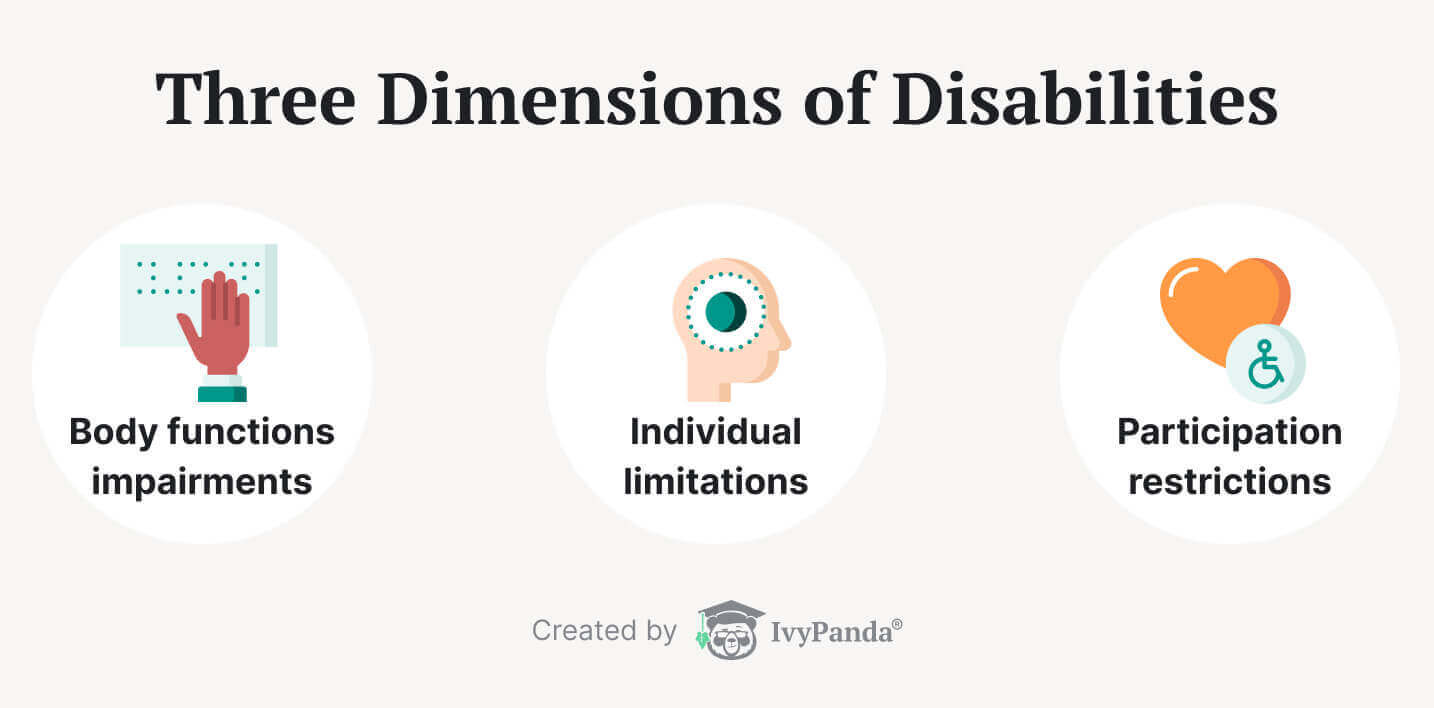
To be more precise, we can break a disability into eight sub-categories. Consider them and some examples within each group.
Note that every experience with a disability is unique and may not fall into any of these categories. However, knowing these classifications is essential to be aware of the people around you.
📊 How Many Students with Disabilities Go to College?
When entering college, a student with disabilities might feel incredibly lonely. However, the recent findings of the National Center for Educational Statistics show that more people with health conditions than ever before are now getting an education.
For example, in the United States, 7,182,916 people from the ages of 3 to 21 years old with disabilities enrolled in an educational institution. That number is almost doubled compared to 1990, when 4 million young people with health conditions were registered.
Here’s a table with the percentage of students from 3 to 21 who started their education by their disability type.
- Specific learning disability (33%). Dyslexia, dysgraphia, and dyscalculia.
- Speech or language impairment (19%). Stuttering, articulation errors, and tongue tie (ankyloglossia).
- Other health impairments (15%). Limited strength or alertness because of chronic or acute health problems such as asthma, anemia, epilepsy, etc.
- Autism (12%). Autism spectrum disorder is a developmental disability attributed to differences in the brain.
- Development delay (7%). Taking longer to learn something and interact with others.
- Intellectual disability (6%). Down’s syndrome, fragile X syndrome, and fetal alcohol syndrome.
- Emotional disturbance (5%). Panic disorder, generalized anxiety disorder, separation anxiety, social phobia, or depression.
- Multiple disabilities (2%). Multiple disabilities is an umbrella term used to refer to people with more than one disability.
- Hearing impairment (1%). Mild, moderate, severe, or profound hearing impairment or loss.
These statistics might have been different if all students with a disability had completed the survey. The National Center for Educational Statistics revealed that only 37% of college students with disabilities inform their administration. This happens because students often don’t want to be judged by their disability. However, telling the college about your disability may prevent misunderstanding and give you access to useful resources.
Other statistics collected by Yale University provide some food for thought:
- While 94% of students with disabilities get some kind of help during high school, only 17% of these students take advantage of the resources their college provides.
- The most widespread types of disability among students in private 4-year U.S. colleges are learning disabilities (36%), ADHD (26%), and mental illness (13%).
- Overall, 57 million people in the U.S. have a disability. Approximately 1 in 4 of today’s 20-year-olds will acquire disability before they retire.
🚧 Challenges & Barriers for Students with Disabilities at College
So, what possible barriers could students with disabilities encounter at college?
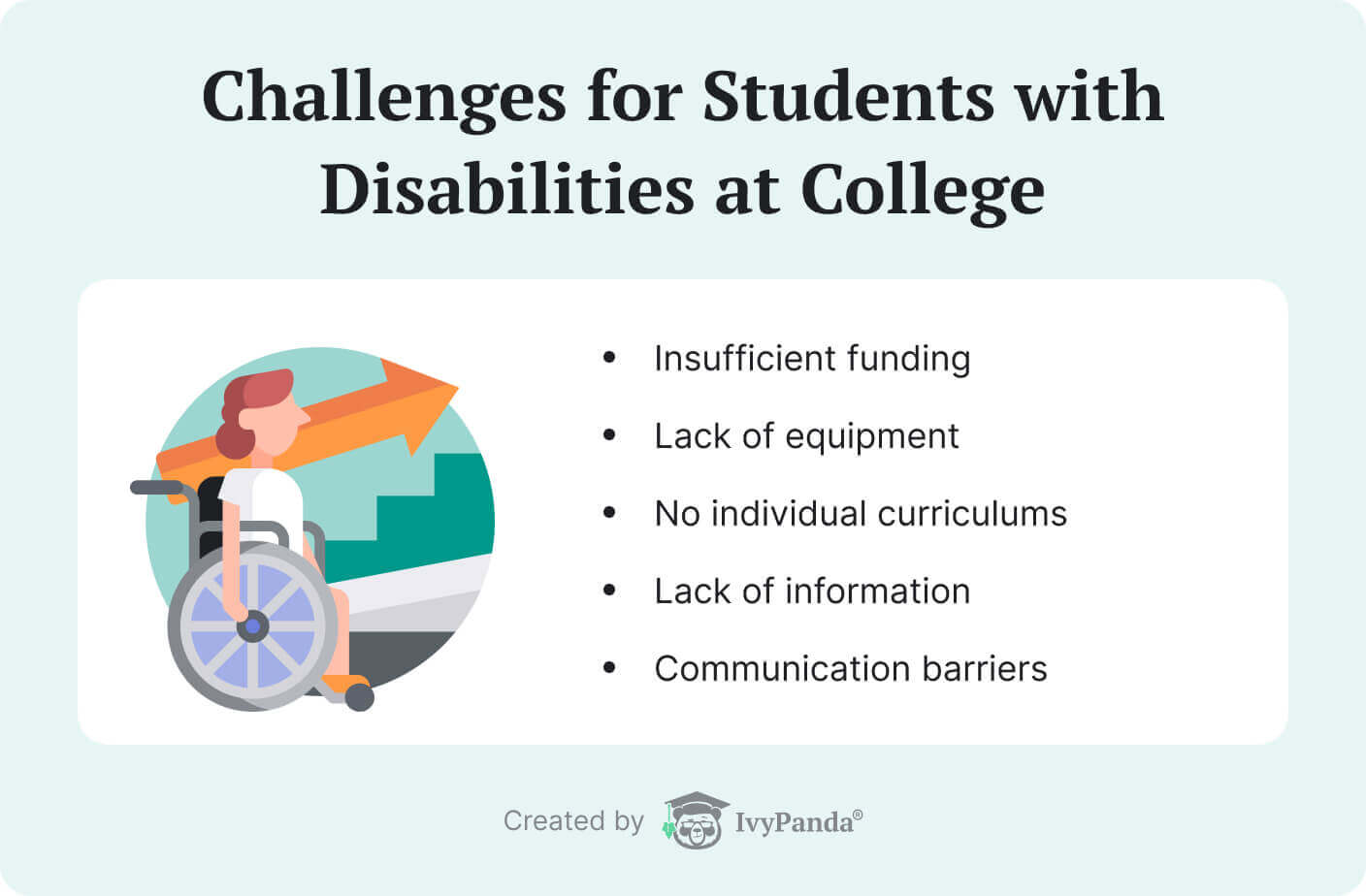
Insufficient Funding
Some colleges don’t have enough financial support to provide students with medical conditions with appropriate accommodations. Although the issue of colleges not having enough money is common for all students, it is much worse for those with disabilities.
Inaccessible Conditions
Often colleges cannot procure students with accessible conditions to move and study comfortably. Commonly, ramps or elevators are absent, doors are too heavy to open, and bathrooms aren’t appropriately equipped.
Lack of Individual Curriculums
Another typical problem is an inadequate curriculum. Not all colleges provide individual education plans. Most of them create curriculums for students with average development and don’t consider the needs of young people with learning disabilities.
Lack of Information to Potential Students
Many students don’t know what choices are open to them at college. They are often unaware of all the resources the college has that can make their lives a little easier. The lack of information may also negatively influence the choice of an educational institution.
Difficulties in Communicating with Peers
Students with disabilities remain at risk of falling victim to discrimination. Often stereotypes around disabilities create barriers between those with physical or mental conditions and students with average development.
Inconsistency Between Various Education Providers and Sectors
In many instances, the move from high school to college reveals significant gaps in the level of service. There can even be a lack of equality between high school and college in one city, causing students with disabilities to experience a need for extra support.
🤲 How Colleges Support Students with Disabilities
College disability services differ from high school, making it hard for students to adjust. It’s important to consider all the opportunities colleges offer to help students with disabilities adapt more easily. Consider these college resources that might be especially useful.
Financial Aid
- Social Security Benefits. The Social Security Disability Insurance program helps young adults who were disabled before the age of 22 by reducing education and training expenses.
- Supplemental Security Income. This program provides monthly benefits to young people with disabilities. It also offers additional support, such as food assistance, healthcare services, and supplemental income payments.
In addition, numerous grants and scholarships come from educational institutions, private organizations, or companies. You can usually find this information on an organization’s website or contact the representatives directly.

Support Services
You can contact your college to learn more about the available options, but here’s a list of the most common systems of support:
- Psychosocial support services. These services can support students with disabilities in managing the stress related to integrating and adapting to a college environment.
- Individual academic help. Individual educational help supports students with disabilities in planning and achieving success in their academic performance. They can also help manage schedules and develop effective learning strategies, taking into account students’ specific health conditions.
- Help centers. Help centers are usually dedicated to specific subjects such as English, Mathematics, or Psychology. They also encourage peer tutoring, which can be an excellent opportunity for a student with disabilities to meet new friends.
Other Services
Finally, many colleges offer extra measures to help students with disabilities, including:
- Extra time during exams.
- Use of computer software during classes.
- Access to quiet rooms during exams.
- Individual schedules.
- Physical guidance.
- Interpretation into sign language or subtitling.
- Use of specialized equipment in classrooms and dormitories.
📑 Tips for a Person with a Disability Entering College
Here are things to consider as you enter your freshman year of college or transfer to a different university as a student with disabilities.
- Seek out help when you need it. Asking for support can be tricky, but this is key to personal and academic success.
- Plan ahead. Break big assignments into smaller steps and create a deadline for each.
- Communicate proactively. Don’t be afraid to contact your college administration or share your concern with professors when needed.
- Set reasonable expectations. People are imperfect, so don’t be too hard on your roommates, professors, or yourself.
- Investigate your learning style. Find out which learning techniques work for you and which don’t. Figure out if you’re a visual, auditory, or hands-on learner.
- Find your people. Being a part of a community is especially important if you want to thrive in college. Give people a chance to get to know you better.
- Balance your classes. Consider the class length, difficulty, and location if you can create your individual schedule.
- Meet and talk to professors. It’s a good idea to contact your teachers and inform them about your conditions in advance.
- Find a good place to study. Think about when and where you study the best. Many students choose a lively cafe, while a quiet library might be a better option for others.
- Enjoy your passion. When studies feel too stressful, it’s nice to have a hobby that will help you unwind and get your mind together.
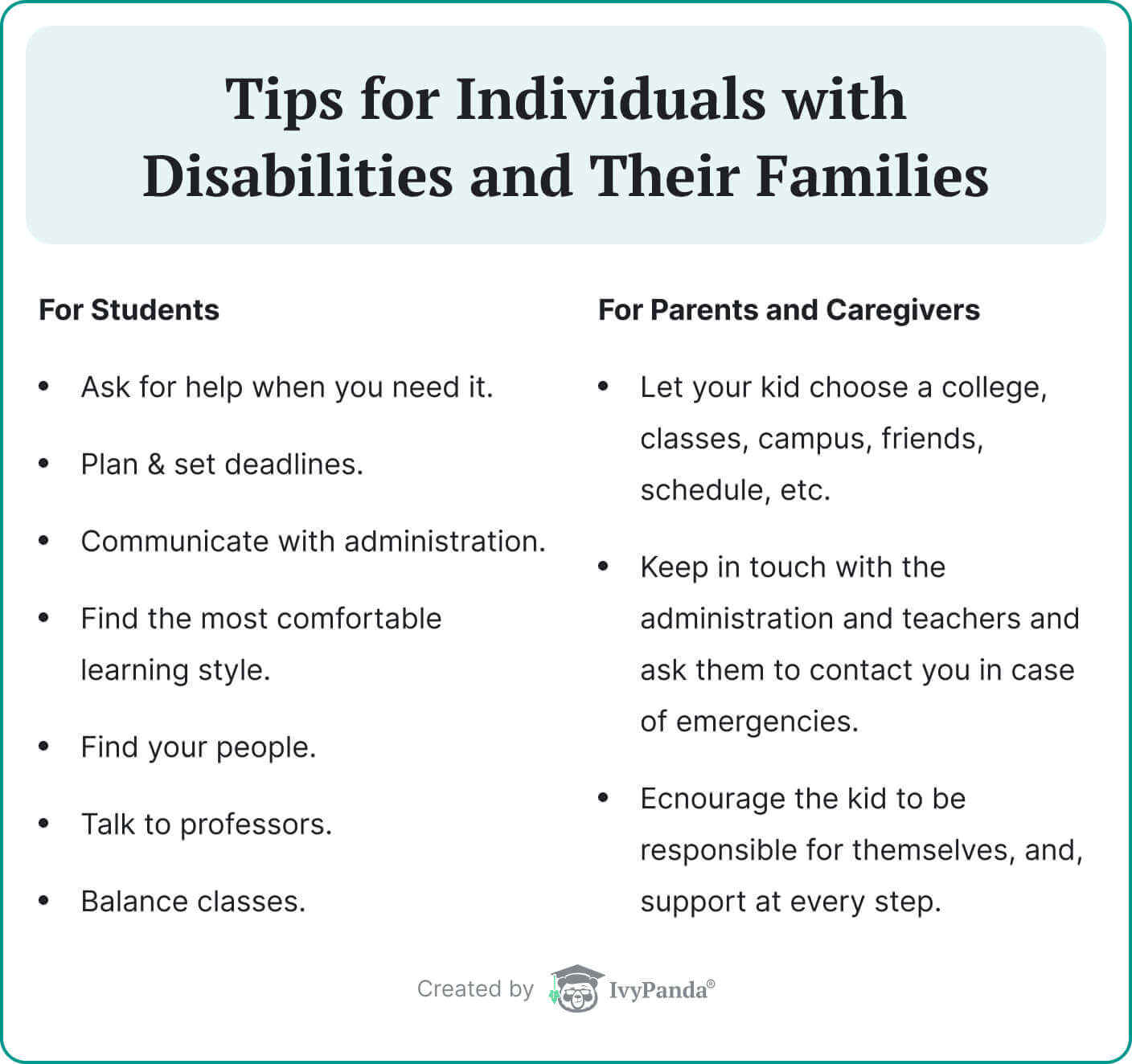
👪 Advice and Tips for Family Members
It’s natural for a parent or caregiver of a child with disabilities to worry. Consider these tips to help your kid successfully transition from high school to college.
- Allow your child to choose a college to attend.
You might want your child to stay close to home or choose a college with better support services, but remember that this isn’t your choice to make. Let your child choose the campus they’re excited and motivated about. - Contact the college’s office.
Don’t hesitate to contact the college administration if you need more information about accommodations and services. You can also let them know about your child’s condition and ask them to contact you in emergencies. - Encourage and allow your child to be an advocate for themselves.
Show your child that you’re there to support them, when necessary, but let them learn to ask for help at college and take responsibility. College is when young people make mistakes and learn to correct them, so don’t let your kid miss out on such an opportunity.
📱 BONUS: Software, Apps, & Websites for Students with Disabilities
Modern technologies are another solution that can reduce the stress in the life of a student with disabilities in college. Here are the top apps we recommend!
- Dragon Dictation. Dragon Mobile Assistant is an app that sends emails, searches the web, updates social networks, and makes notes simply by speaking. This an excellent solution for students who struggle with typing!
- ASL Dictionary. This app teaches people how to use American Sign Language with the help of short videos. ASL Dictionary helps people with hearing disabilities communicate freely.
- Ariadne GPS. Ariadne GPS allows users with visual impairments to identify distances and locations by creating an auditory map of the world. A must-have for students with a vision disability to navigate around campus!
- StudyStack. This is a powerful but easy-to-use app for making flashcards to review for tests. The flashcard method has proven to be helpful to all students.
- Learning Ally. The Learning Ally app was designed to provide access to audiobooks for students. Currently, it has more than 75,000 different books and textbooks, which is excellent for students with vision disabilities, dyslexia, and those who struggle with concentration.
- Epic Win. Epic Win turns your usual to-do lists into an RPG setting and allows users to create avatars. The app helps students with psychological conditions reduce daily stress.
- MyStudyLife. MyStudyLife is an excellent software available across all platforms for organizing classes, tasks, exams, and other important events. It can be helpful for students with various types of disabilities.
🔗 References
- Disability and Health Overview | CDC
- Disabilities: Definition, Types, and Models of Disability: Disabled World
- Number and percentage of children served under the Individuals with Disabilities Education Act (IDEA): 1990-91 through 2020-21
- National education data: More students with disabilities served over the past decade in public schools – Iowa Capital Dispatch
- What we know about disabled students in the U.S. | Pew Research Center
- What challenges do students with disabilities face as they transition from two-year to four-year colleges? | DO-IT
- ACCESS TO EDUCATION FOR STUDENTS WITH A DISABILITY: BARRIERS AND DIFFICULTIES | Australian Human Rights Commission
- College Disability Services: 7 Things Parents Should Know | Understood
- Getting started at college for students with disabilities | Gouvernement du Québec
- College Funding for Students with Disabilities | DO-IT
- Supporting Higher Education for People with Disabilities
- 10 Tips For College Students With Disabilities: NPR
- Tips for College Success; Disability, Access, and Inclusion
- ADHD and College: Survival Guide for Teens
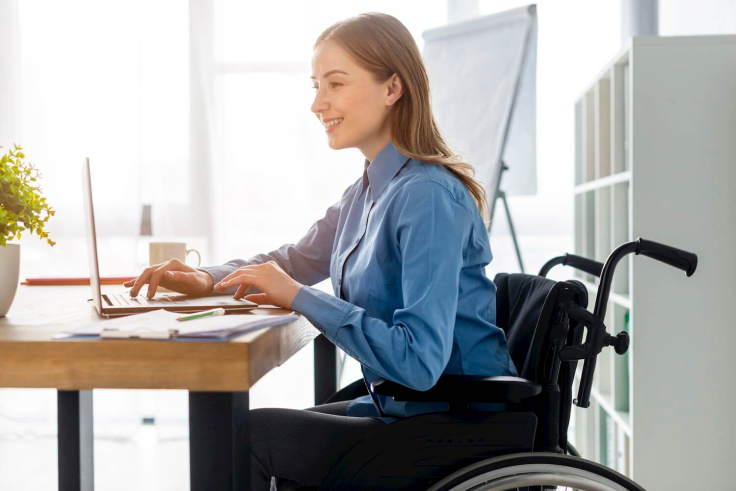


![Social Media Learning Platforms: Are They Underestimated? [2026 Guide]](https://ivypanda.com/blog/wp-content/uploads/2022/05/hands-with-laptop-virtual-world-map-309x208.jpg)